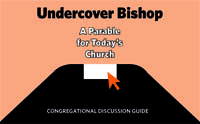The Southeastern Pennsylvania Synod of the Evangelical Lutheran Church in America is marking the commencement of Bishop Claire Burkat’s second term as bishop.
She and much of SEPA Synod have been jubilant at her reelection on the first ballot (by one vote) at May’s Synod Assembly.
Bishop Burkat refused to recognize one congregation which by SEPA governance was entitled to about five votes (a clergy vote, one male and one female vote, a vote as a predominantly black congregation and a vote as a multilingual congregation.)
The rest of Synod Assembly and the ELCA never questioned the edict and turned a deaf ear to our protests.
Other congregations were muscled out of existence before us, reducing the voting pool. One way to guarantee success is to intimidate or eliminate opposition.
Redeemer is not an authoritarian church and we have no idea how our delegates might have voted at the last four Synod Assemblies that have turned us away with no constitutional authority. Neither does anyone else!
We suspect that Redeemer’s five votes might have made a difference.
Redeemer, now supposedly excommunicated from Lutheran fellowship, remains loyal to the Lutheran Church. Even amid oppression, Redeemer has made a difference in the Lutheran presence in the five-county area. In court in 2009, Synod’s legal representation argued that Redeemer is the first of six churches they plan to close by force.
It would appear that a few congregations have been spared (for the time being) because of Redeemer’s stand.
We hope that in her second term, Bishop Burkat does a better job. This time we hope she leads good people in exercising the values the Lutheran Church teaches — love, compassion, gentleness, kindness, forgiveness, reconciliation, atonement and grace.
Everyone deserves a second chance.






